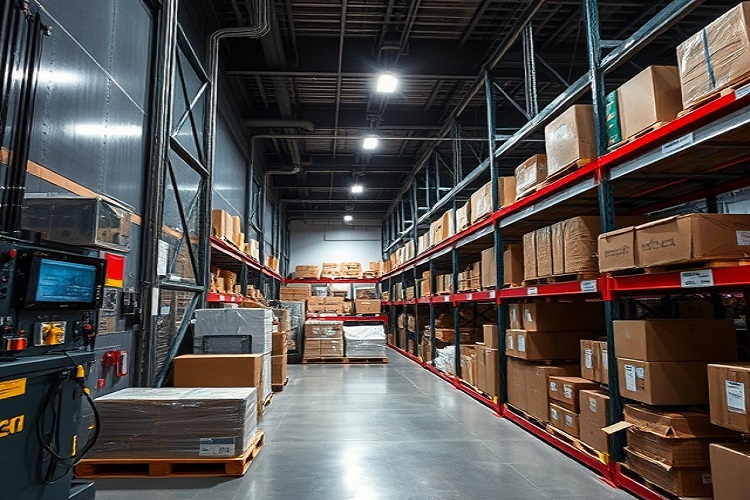The last few years have been very challenging for the electronics industry in managing the supply chain. This industry has faced many problems, like natural calamities, political instability, and pandemics. Do you know that 63% of electronics companies have suffered from supply chain disruptions during the last few years?
Just the global semiconductor crisis has had a negative impact of $121 billion on the industry’s revenue. In addition, 53% of product launches were delayed or canceled due to COVID-19. Major product redesign implementations occurred because components could not be sourced. To mitigate these issues, platforms like Partstack.com provide a streamlined solution for businesses to source electronic components more efficiently and reduce the risk of supply chain disruptions.
It is important to understand and address these issues. It can help businesses to remain viable and continually create and offer value to customers. A disruption in one link of the electronics supply chain directly affects others which leads to delays and increased costs throughout the entire network. In this blog, we will learn about these supply chain disruptions in the electronic parts industry.
For a deeper understanding of supply chain challenges and solutions in the electronics industry, electronics buyer offers valuable insights into managing disruptions and optimizing operations.
Table of Contents
Why the Electronics Supply Chain Faces Disruptions
Several factors contribute to the disruptions in the electronics industry. Understanding these can help businesses anticipate challenges.
Geopolitical Tensions:
Currently, trade wars like the one between the U.S. and China have distorted the supply chain. The war between Russia and Ukraine has also played a major role in the situation. Such issues result in tariffs and trade restrictions most of the time. Thus, the costs for manufacturers rise. This makes it difficult for them to achieve or meet production deadlines.
Natural Disasters:
Disasters in many ways can affect factories and logistics networks. These include earthquakes, floods, and hurricanes among others. In March 2011 in Japan, an earthquake affected the component supply of key electronics such as memory chips. It also led to many delays within the industry.
Transportation Disruptions:
Delay shipping and congestion at the ports are major risks in supply chains. Another factor is labor strikes. The COVID-19 pandemic made this even worse. Transport restrictions and a lack of available delivery shipping containers resulted in a sharp increase in logistics expenses.
Supply-Demand Imbalances:
There are inconsistencies in satisfying demand by the electronics manufacturing industries due to Supply-demand imbalances. A sudden surge in demand can create severe shortages. For example the increased demand for electronics during the pandemic.
Strategies to Overcome Supply Chain Disruptions
Businesses can overcome these challenges through the strategies mentioned below:
Diversify Your Supply Base
One must not rely on a single supplier or region for the components supply. It can be quite risky for the business. It is important to diversify the suppliers across different regions. This strategy also helps businesses to have better control over the prices.
Invest in Technology for Better Visibility
AI and blockchain technologies improve supply chain transparency and provide better insights. These tools give actual-time information, from the procurement of raw materials to the distribution of products. This way, the companies can identify the bottlenecks in the early stages and avoid costly consequences of delays.
Adopt a Risk Management Approach
They must identify which areas are critical and may cause failure. The contingency plan should include a risk management plan with contingencies. For example, alternate transportation routes or backup suppliers ensure continuous supply during unexpected challenges.
Embrace Sustainability and Reverse Logistics
Consumers prefer products that support the environment. Hence, we should adopt sustainable supply chains. Returned goods management or reverse logistics is the process of reusing materials within a firm. It reduces waste and costs. It also improves a company’s reputation among environmentally conscious consumers.
Collaborate More Closely with Partners
Collaboration with suppliers, distributors, and retailers is crucial for responding to demand. Sharing data in real time ensures that all parties are aware of the current situation. Businesses can reduce supply-demand imbalances with the help of collaboration.
Conclusion
The global electronics part supply chain is complex and ever-changing. This requires adopting flexible, technology-driven, and collaborative approaches. Careful planning is a must to ensure a smooth supply, so that customers can buy electronic components online as well as in offline markets.
It also requires proactive risk management. A commitment to innovation is essential. By diversifying supply sources, leveraging technology for real-time visibility, and adopting sustainable practices. Electronics manufacturers can navigate even the most challenging times while delivering products efficiently and reliably.

